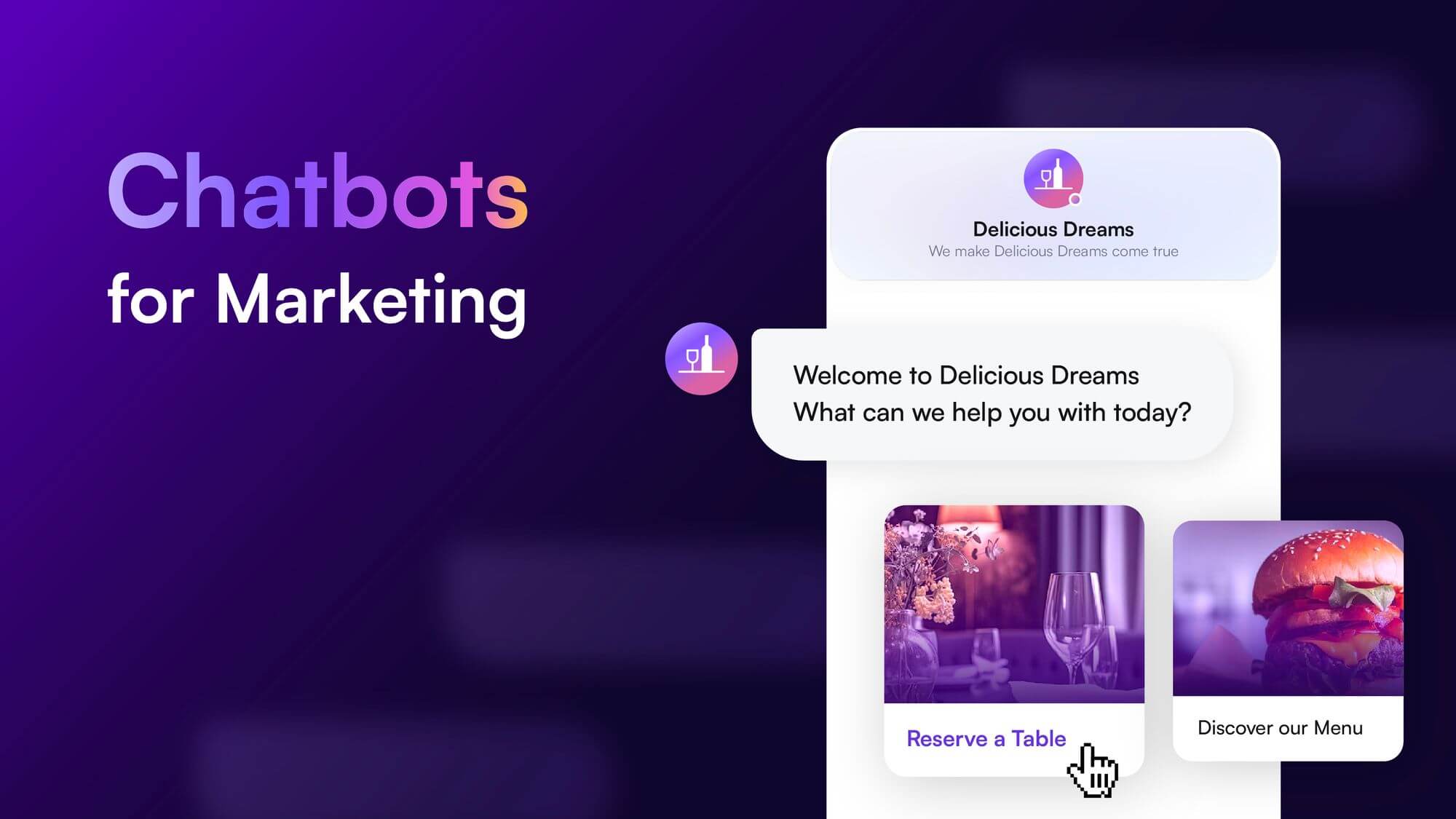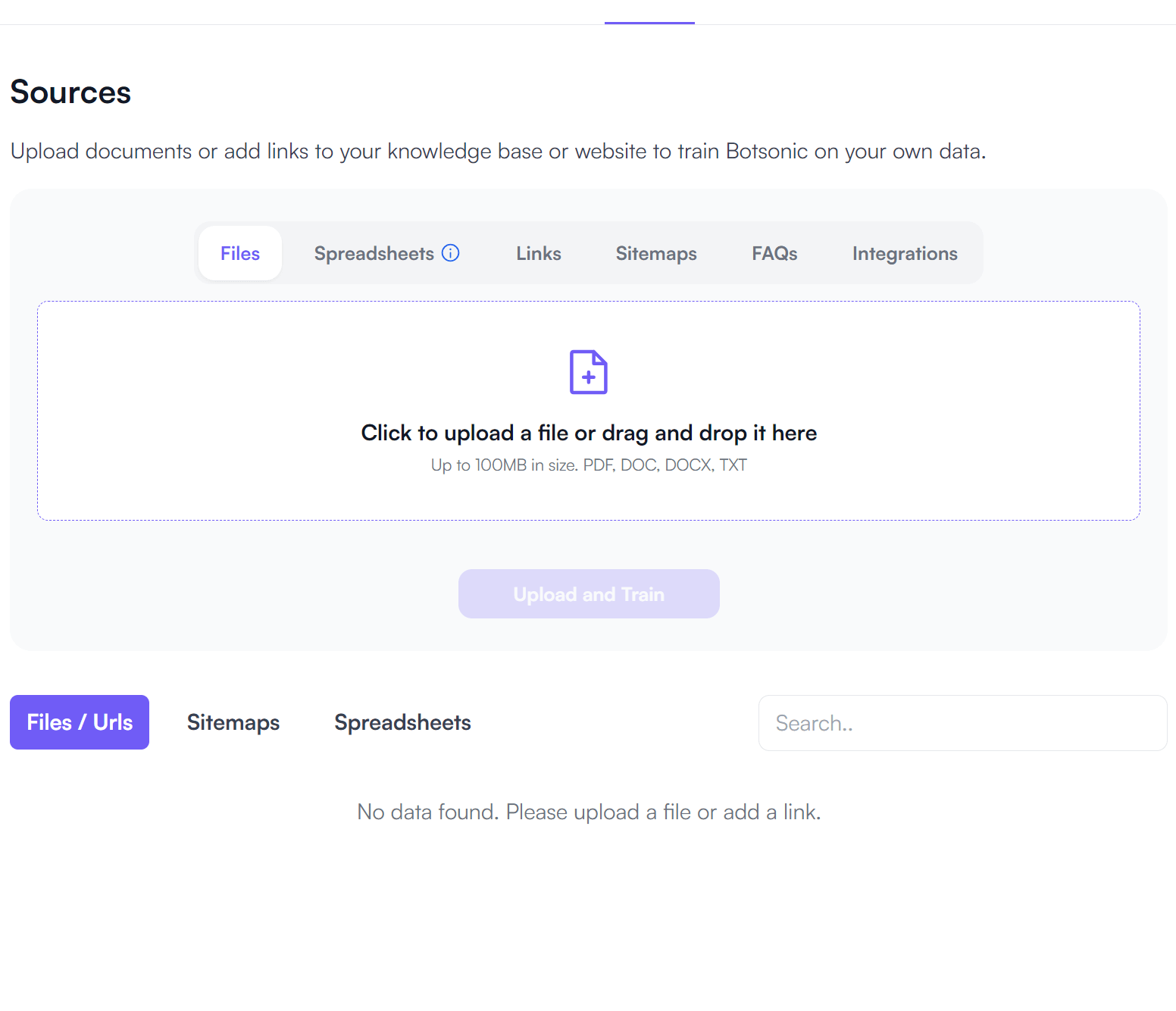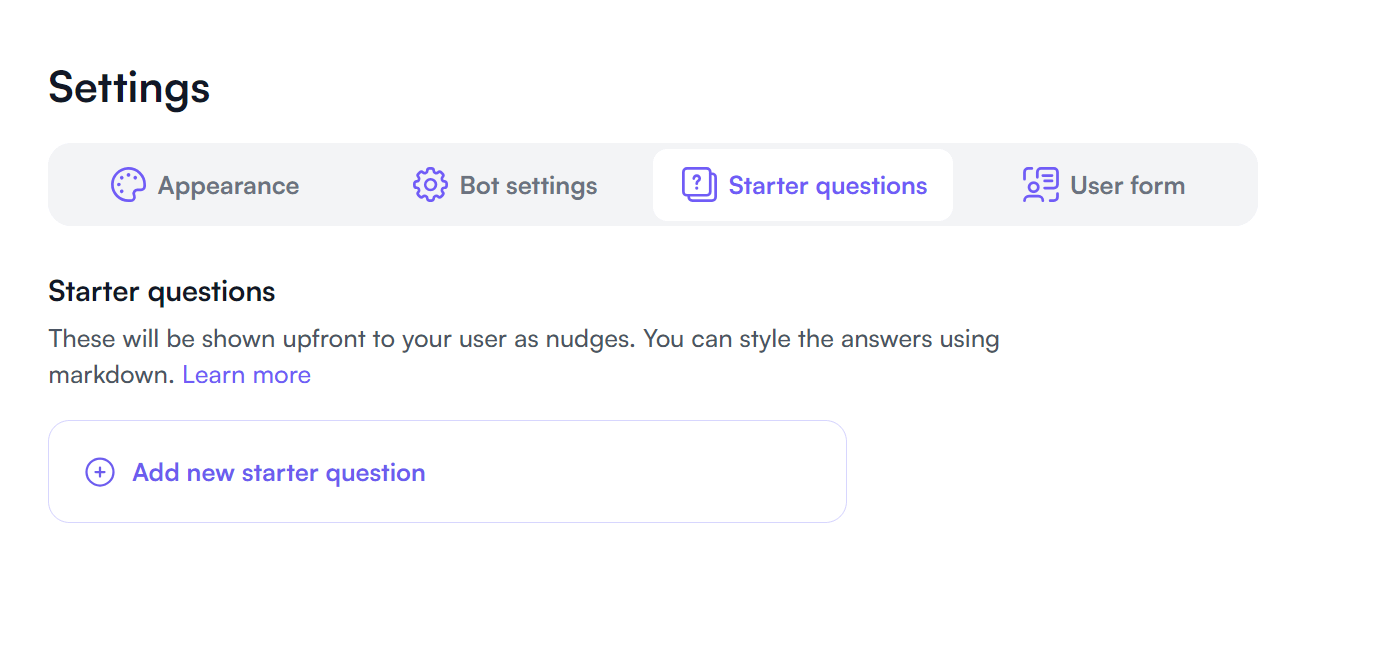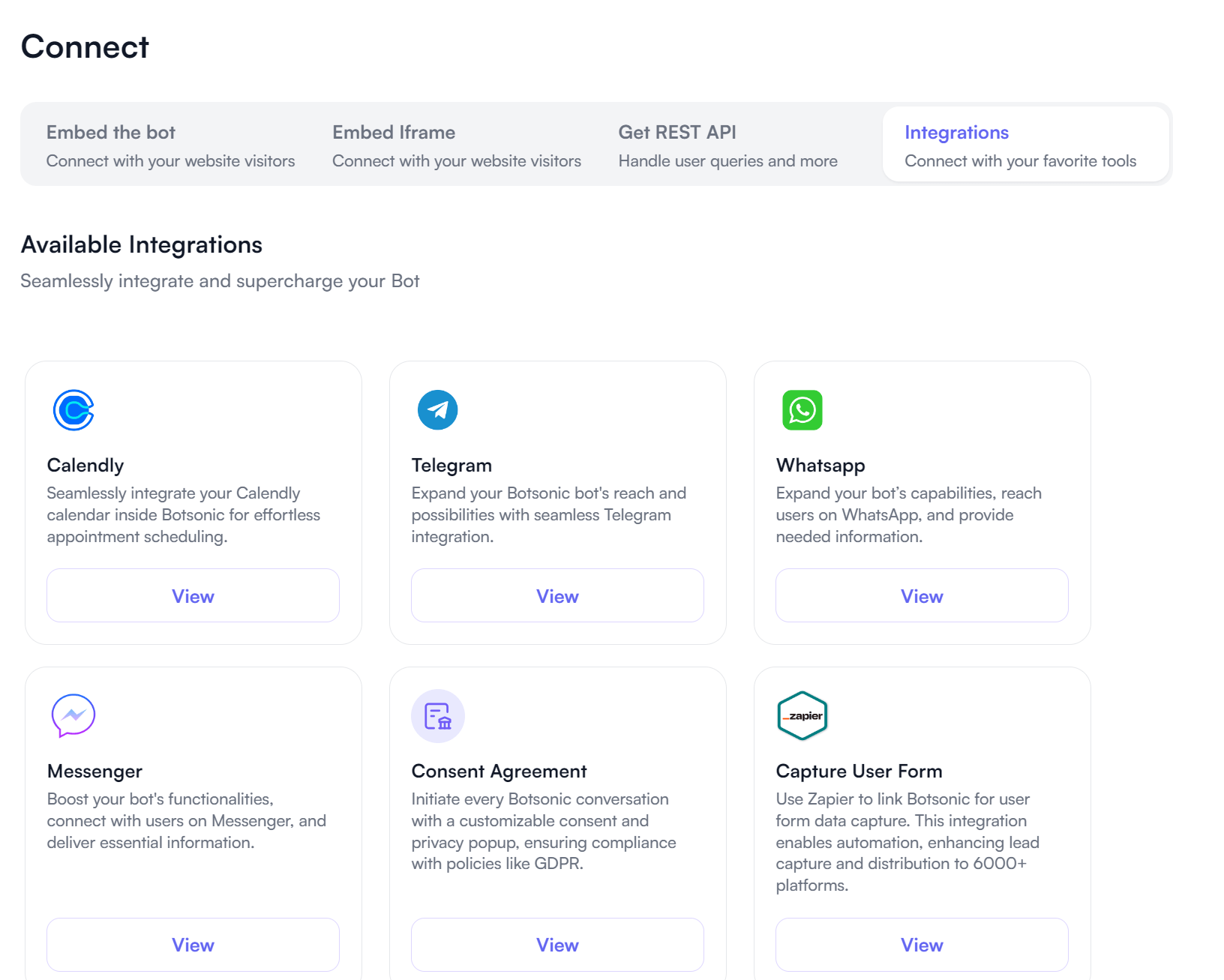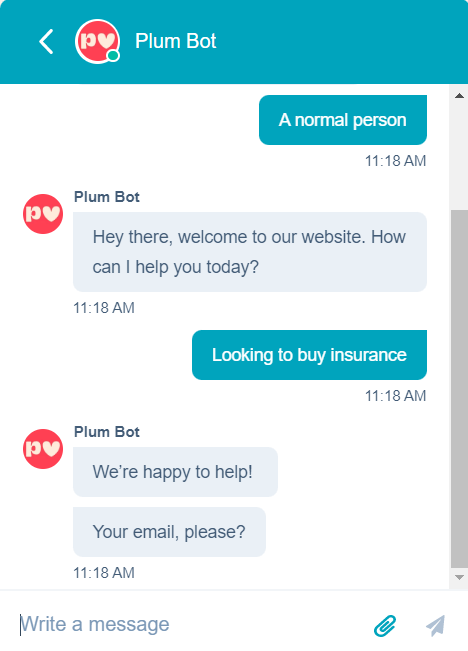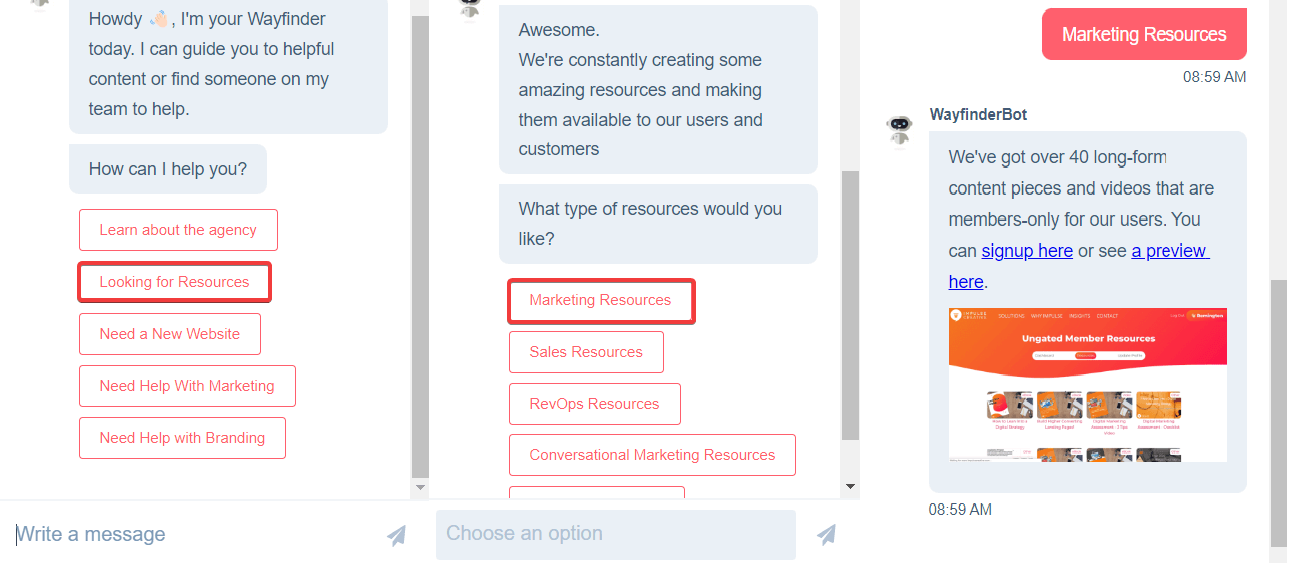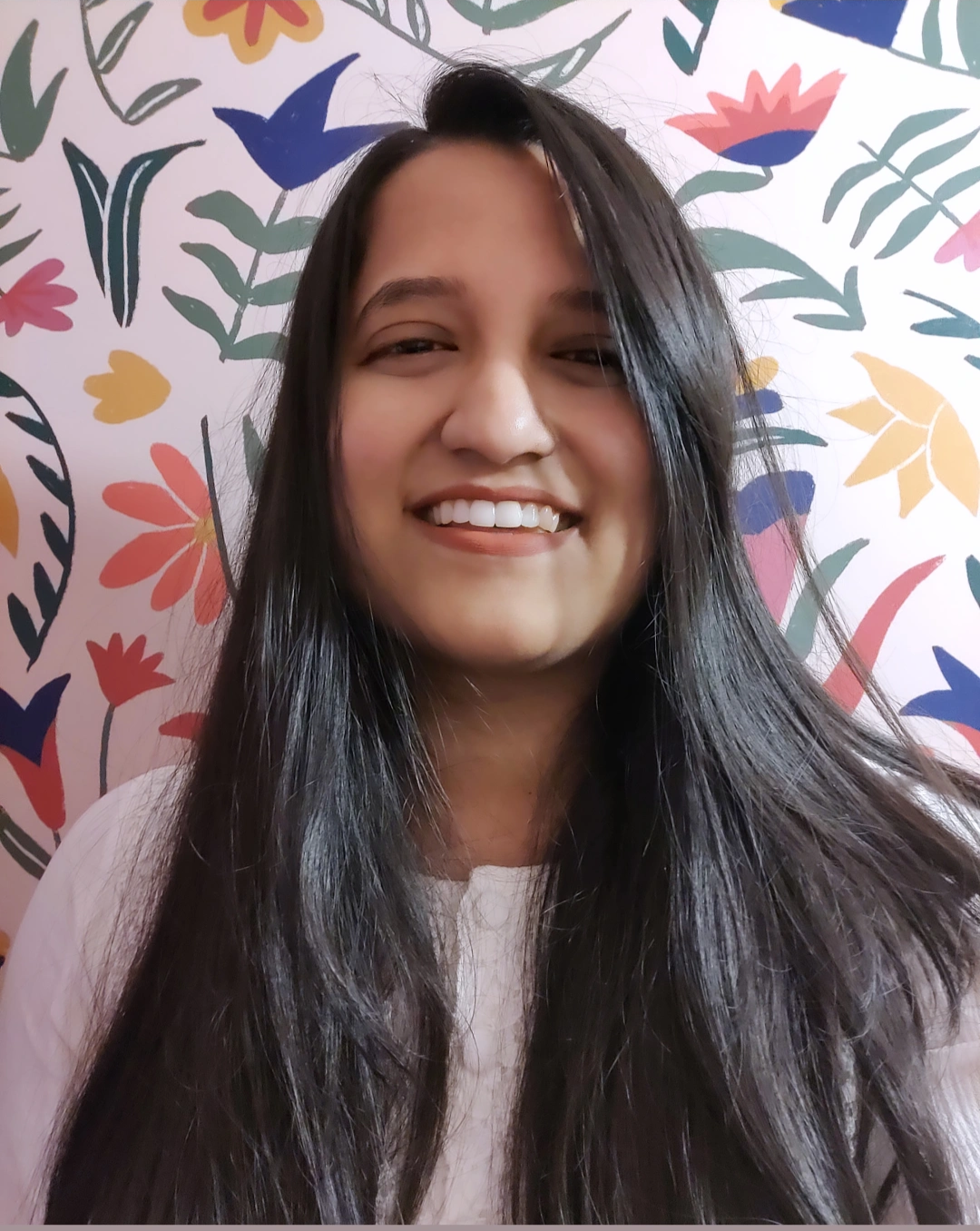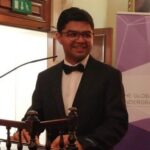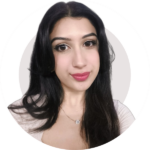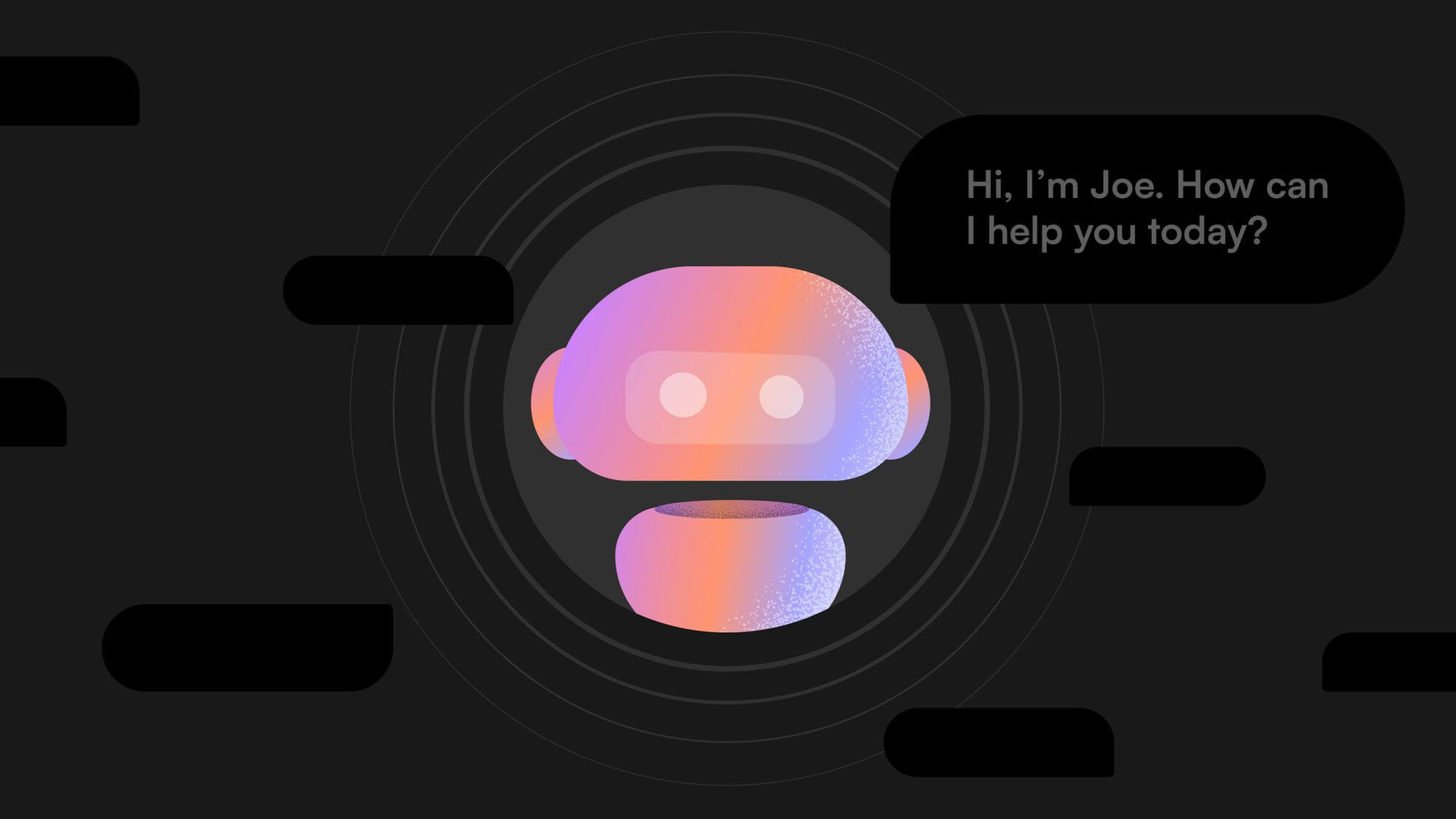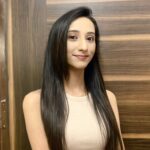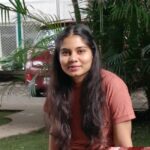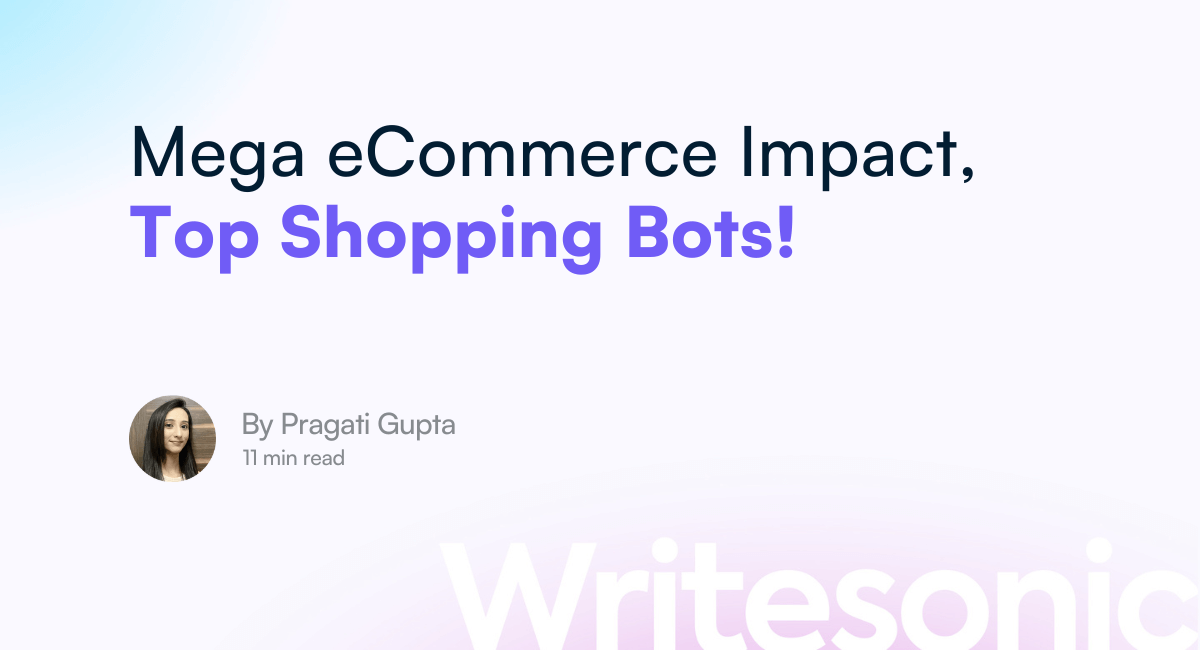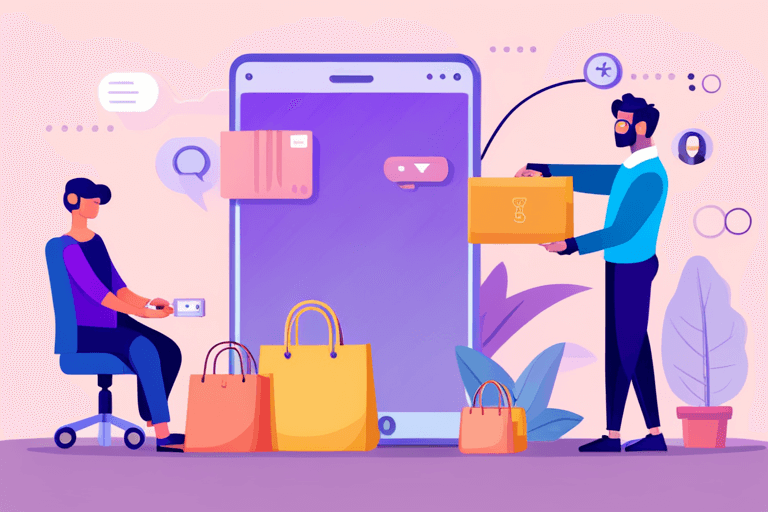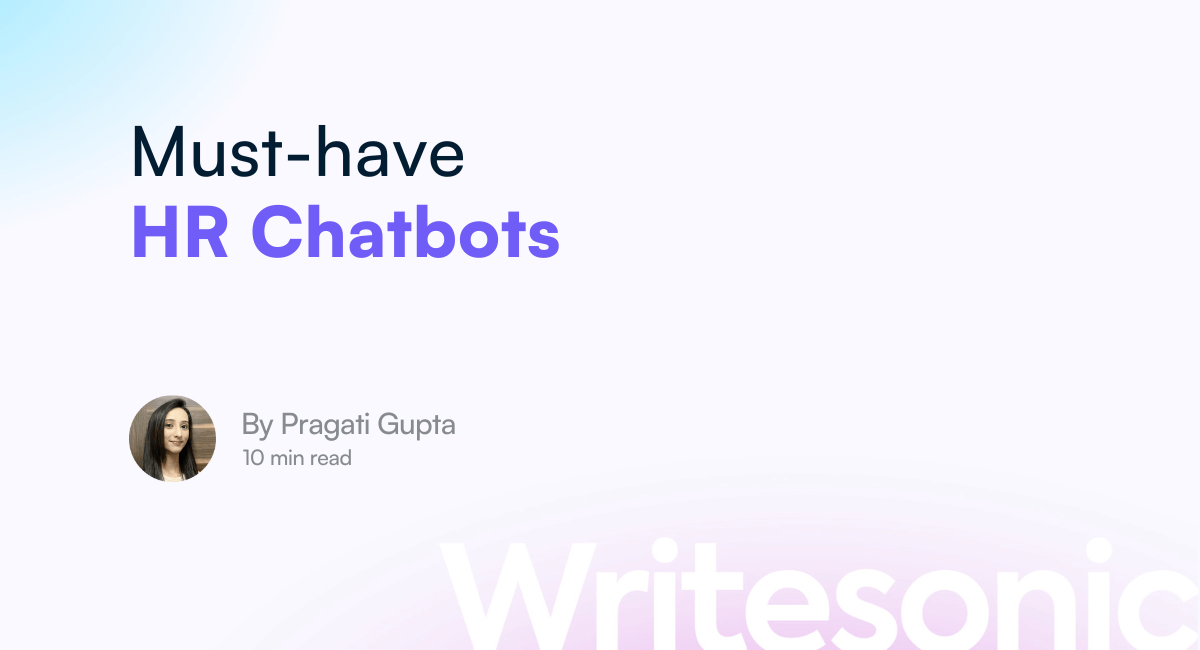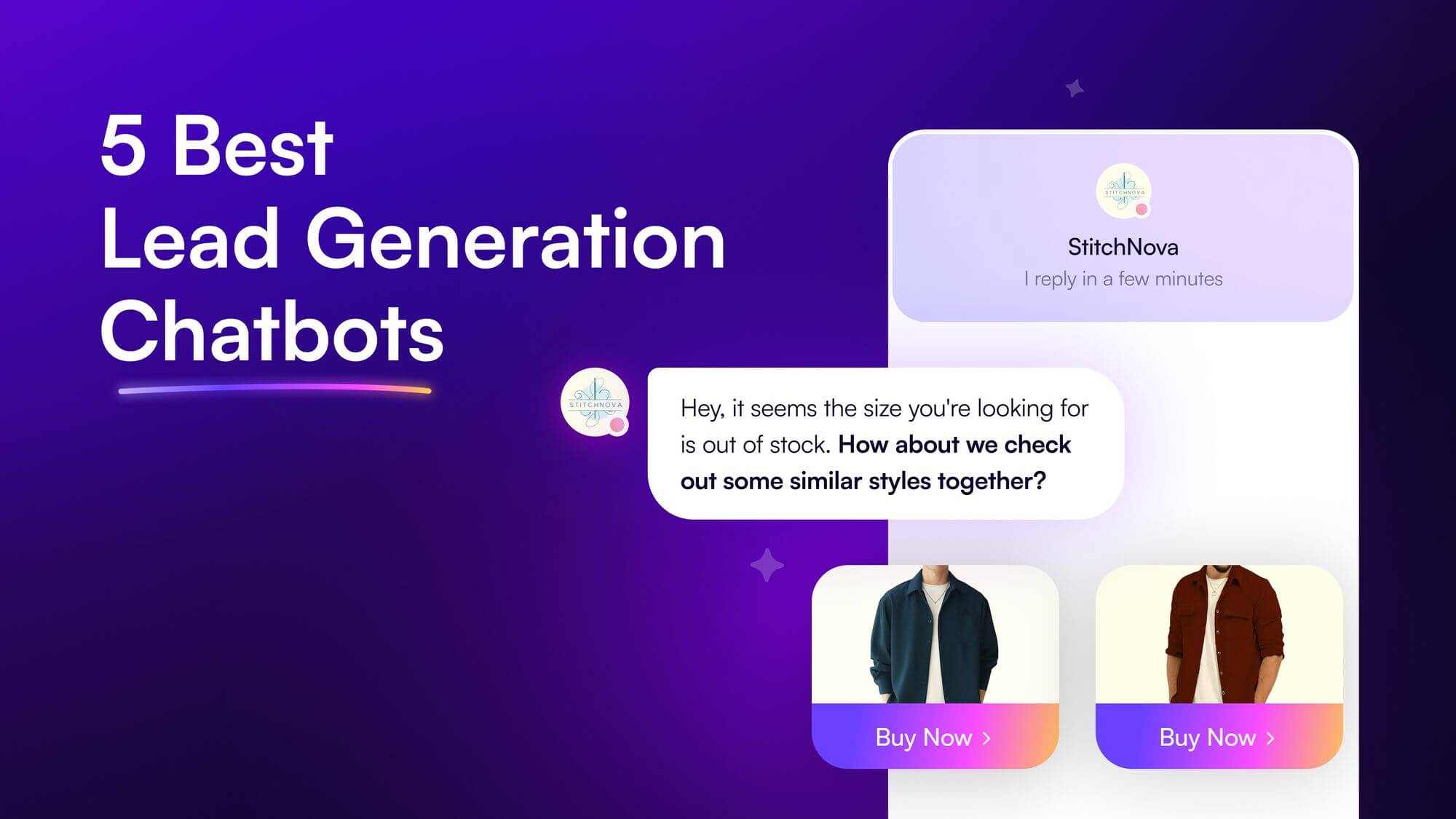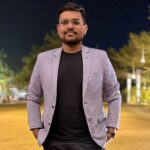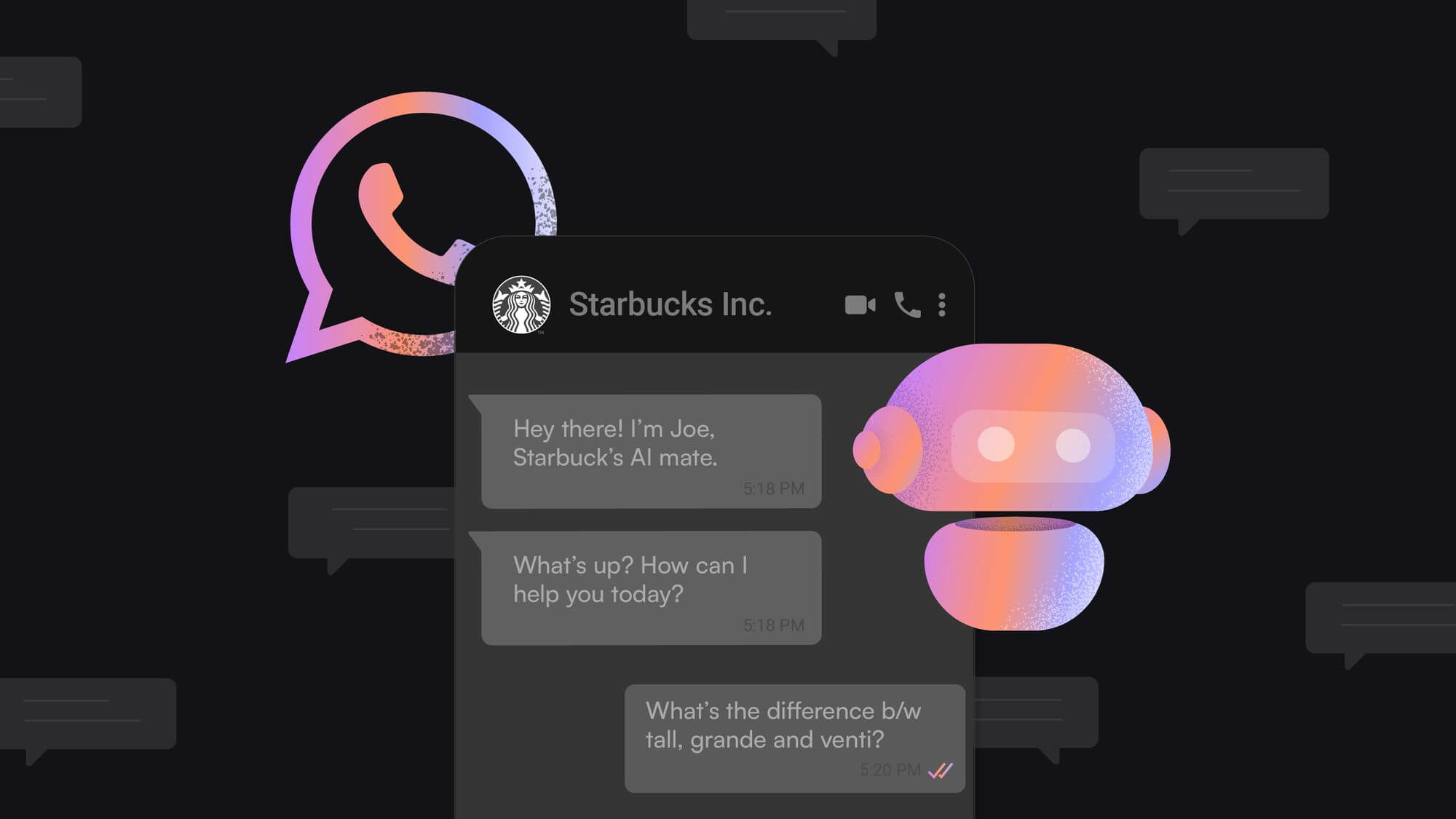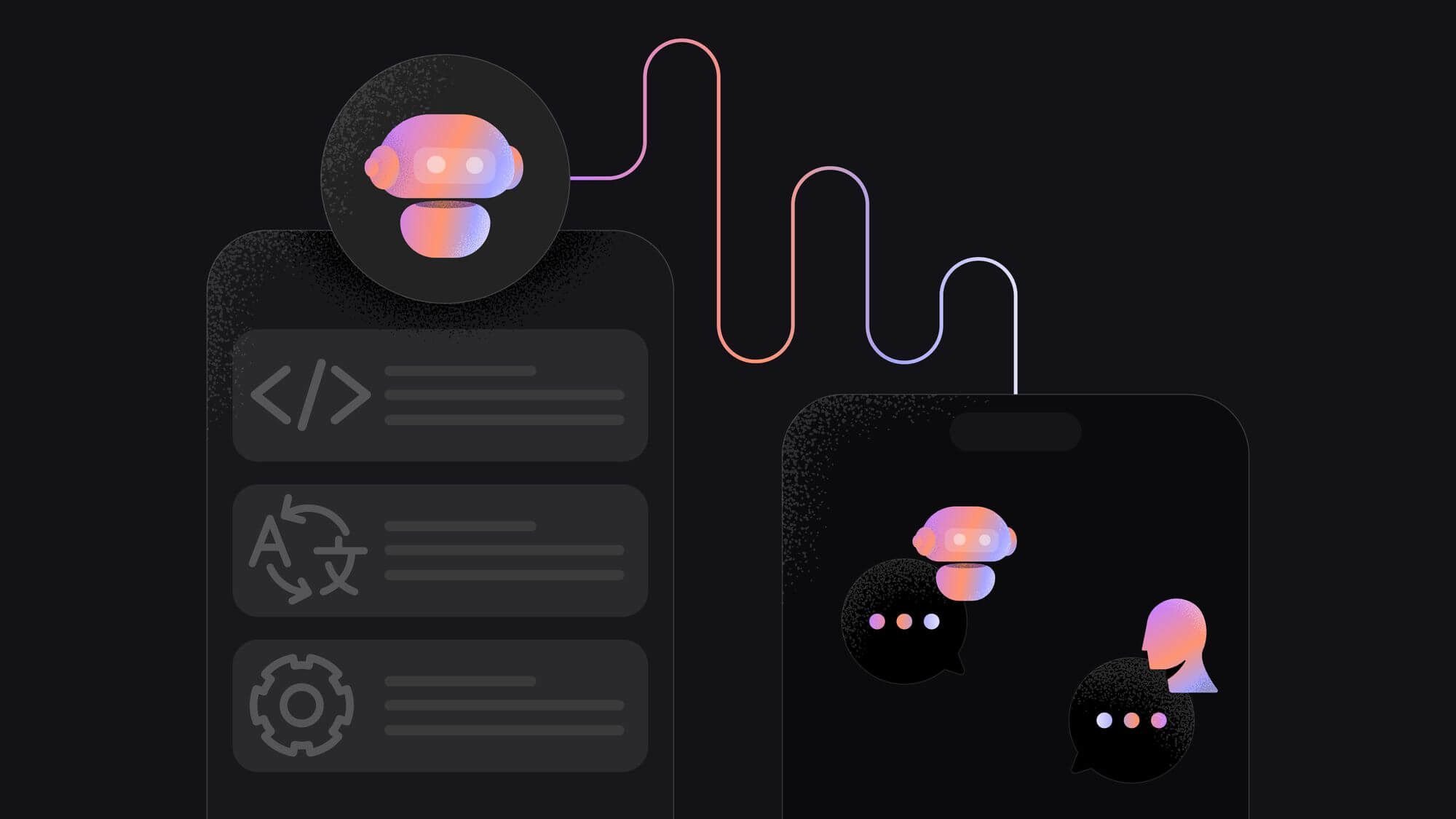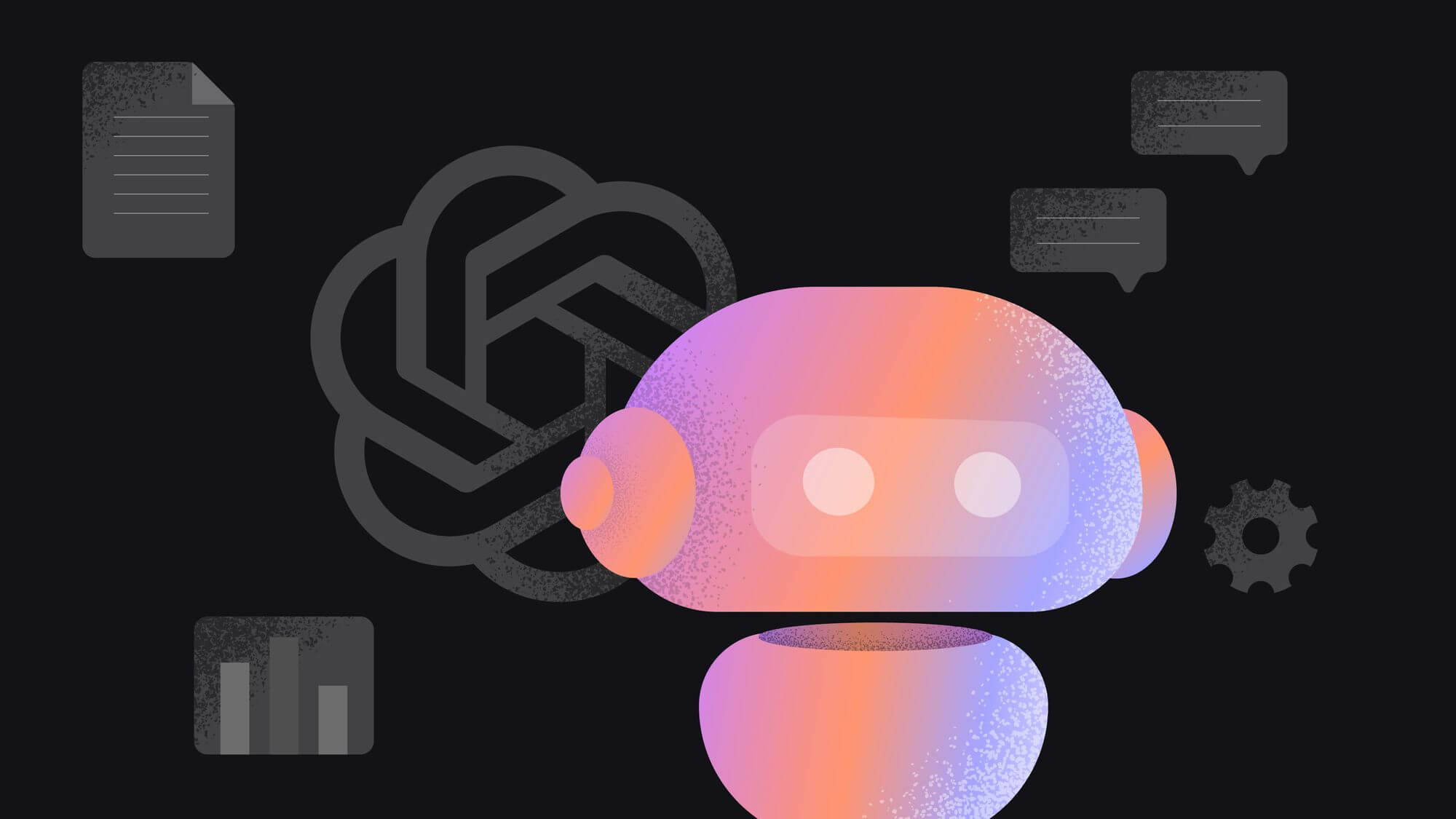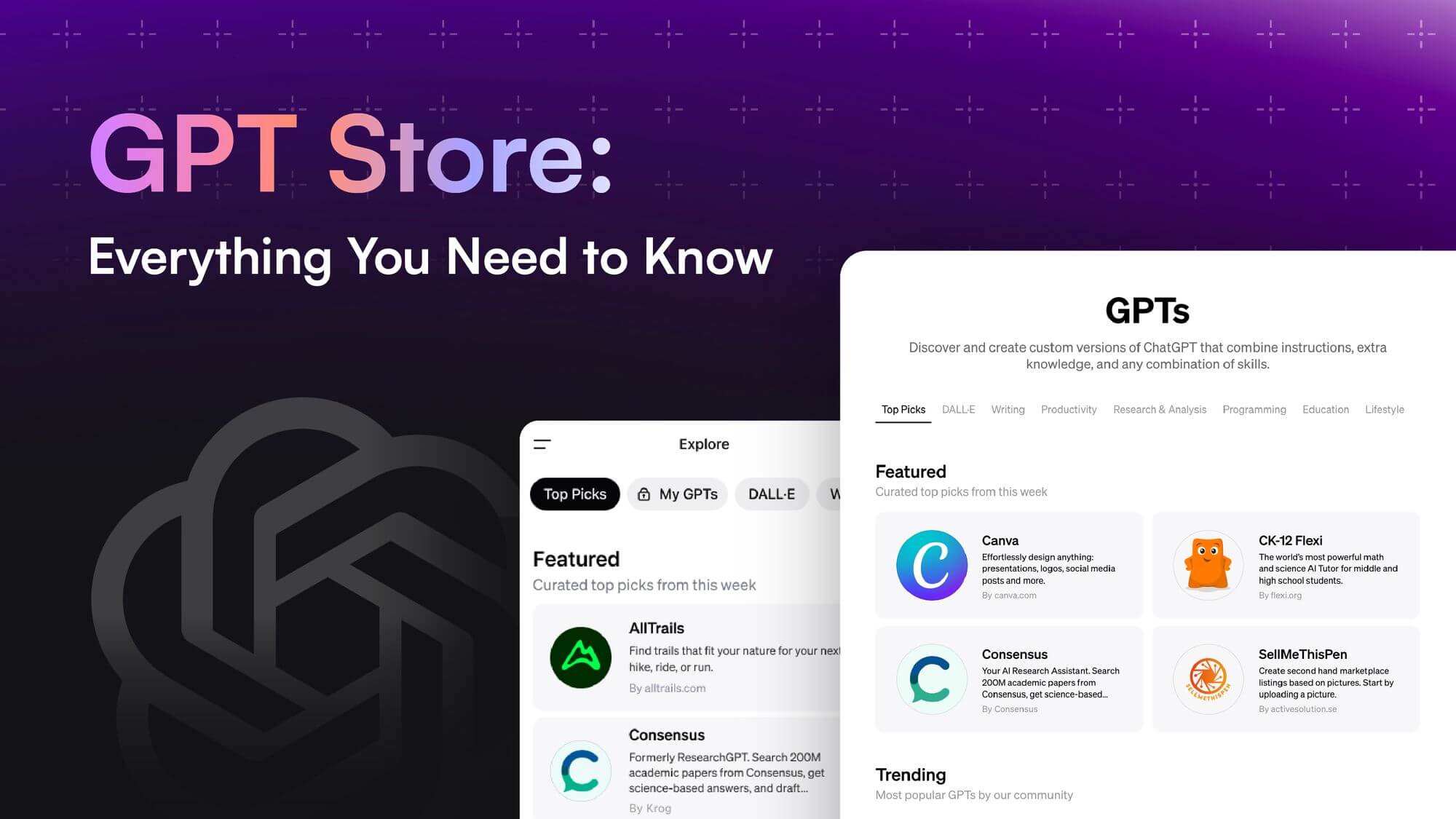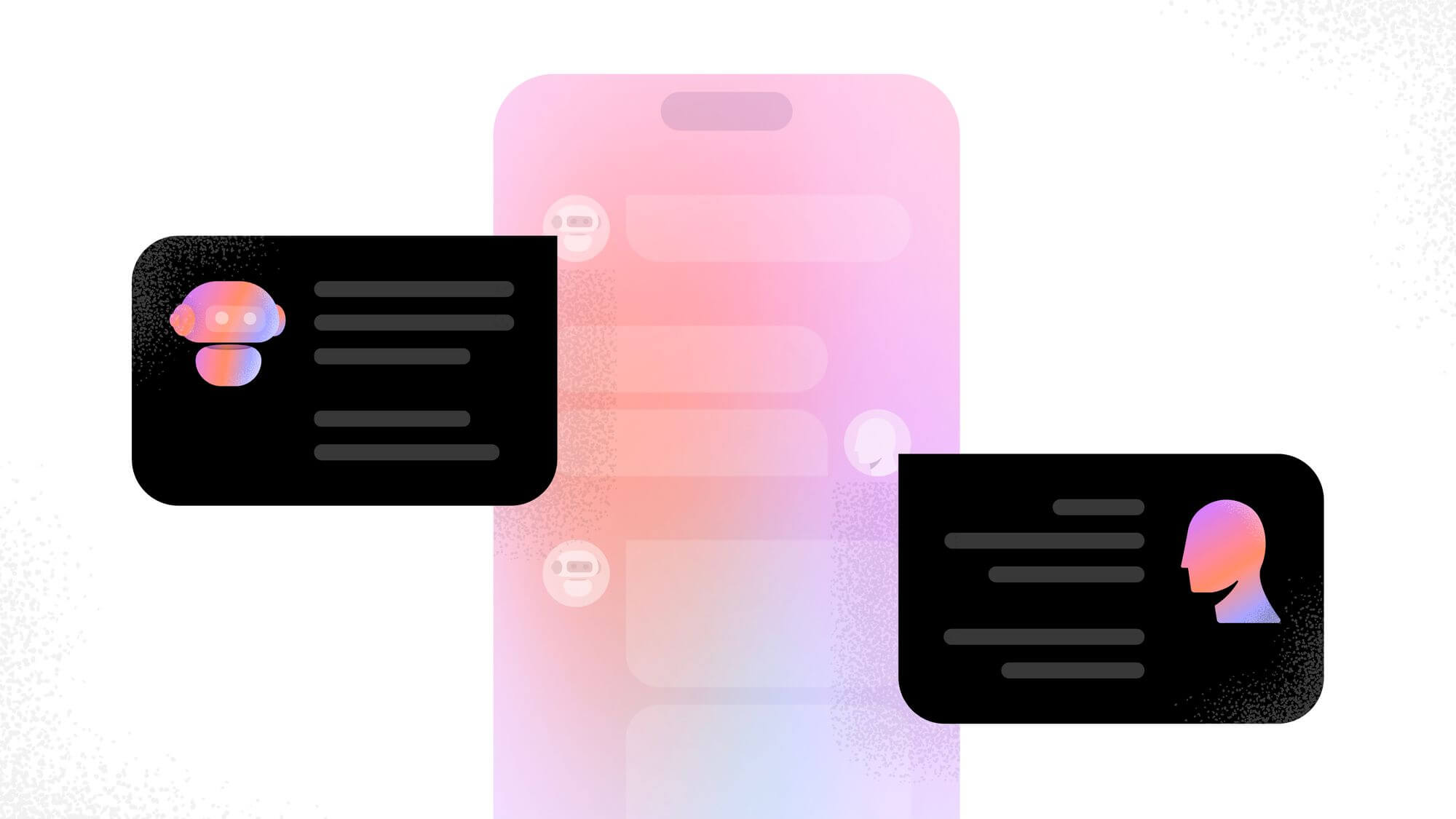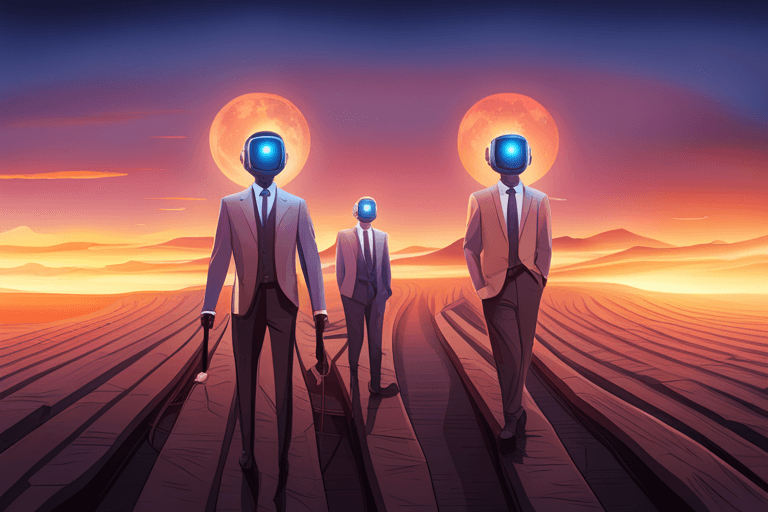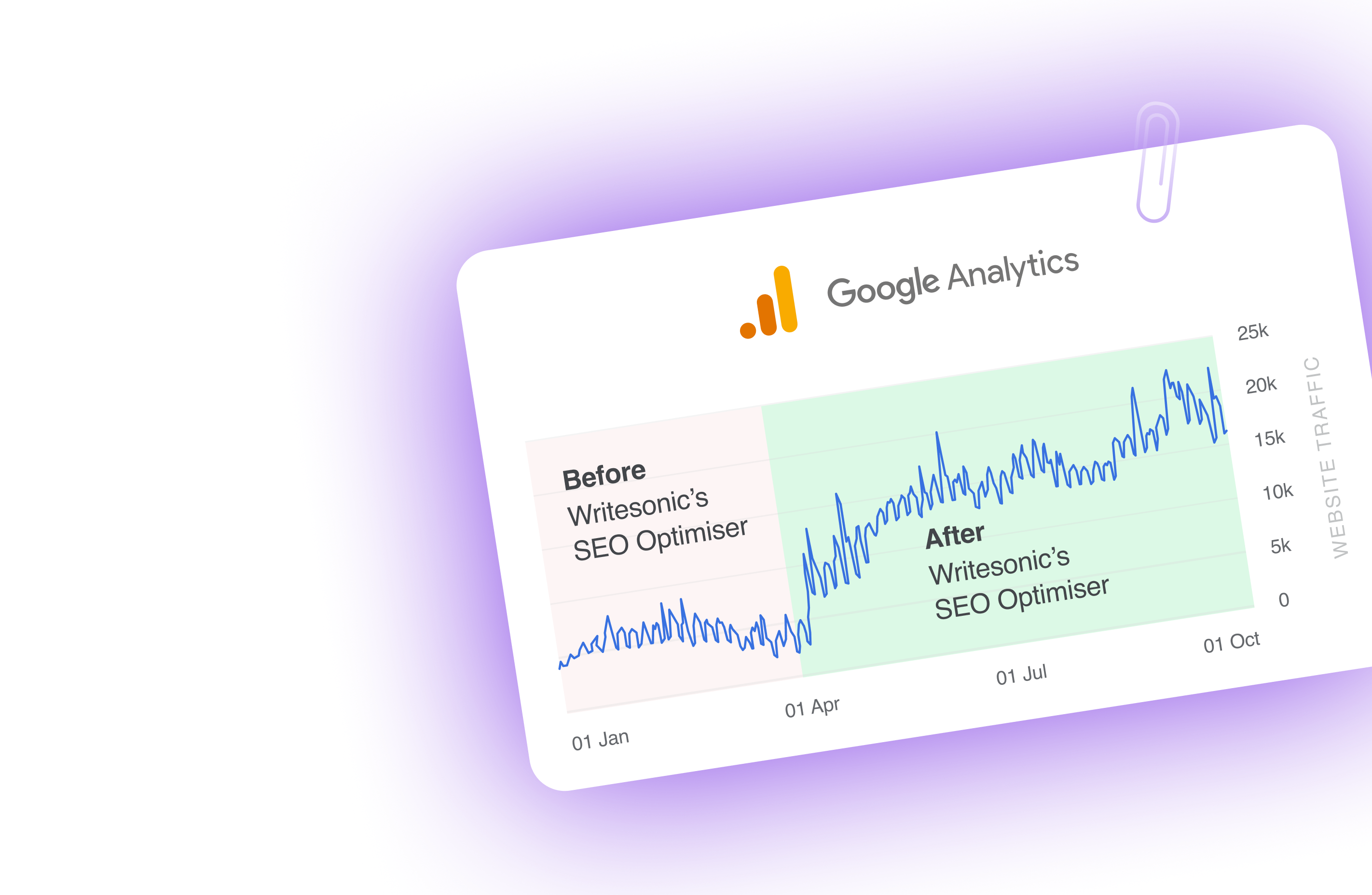Are you struggling to effectively engage your audience in today’s competitive digital marketplace?
As businesses strive to provide personalized and timely interactions, traditional marketing strategies often fail to meet evolving consumer expectations. Delivering seamless customer experiences while managing marketing workflows can be daunting. However, there’s a solution that’s reshaping the landscape of marketing – chatbot technology.
Chatbots are shaping up to be among the biggest game changers for customers. By 2027, chatbots will become the primary customer service channel for roughly a quarter of organizations, according to Gartner.
In this guide, we aim to equip you with the knowledge and tools to transform your approach with chatbot marketing, enhance customer interactions, and drive tangible results for your business.
The Evolution of Chatbots in Marketing
The history of chatbot marketing spans decades, with each milestone representing a crucial technological advancement that has significantly influenced digital customer engagement.
The Early Days: Back in the 1960s, the foundation for chatbot marketing was laid with the development of ELIZA, a program capable of emulating human conversation by matching user prompts to scripted responses. Advancing to 1995, ALICE emerged with enhanced AI capabilities, pushing the boundaries of natural language processing.
The Emergence of Marketing Chatbots: The turn of the millennium introduced SmarterChild, a chatbot present on AOL Instant Messenger, marking the initial foray of chatbots into the marketing domain. It went beyond being a friendly AI, demonstrating the ability to answer questions, provide recommendations, and facilitate transactions.
A Significant Leap: By 2010, IBM’s Watson gained widespread recognition, particularly following its triumph on Jeopardy!. This milestone wasn’t just about winning a game show; it signaled a new era for chatbots in marketing, showcasing their potential to comprehend and process human language in unprecedented ways. In 2014, Facebook integrated bots into its Messenger Platform, opening the floodgates for chatbot marketing and enabling businesses to develop chatbots for diverse purposes, including customer support, e-commerce, and content delivery.
The Ascendancy of AI in Chatbot Marketing: As of 2016, chatbot marketing transitioned from being a novelty to a necessity for brands aiming to maintain a competitive edge. Industry leaders like Sephora and H&M began utilizing chatbots for marketing to craft more personalized customer experiences and drive sales.
The Current Landscape: Today, the evolution persists as chatbots evolve to become more sophisticated, integrating machine learning to comprehend sentiment, identify intent, and offer predictive analytics. This enhances personalization and ensures that chatbots are more contextually aware, delivering marketing experiences that are not just interactive but genuinely engaging.
These pivotal moments in the evolution of chatbot marketing underscore a remarkable journey from simple scripted interactions to complex, AI-driven conversations that can anticipate customer needs and drive marketing success. As you contemplate integrating chatbots into your marketing strategy, remember that you are building upon a rich history of innovation, with each advancement bringing you closer to delivering a seamless, personalized customer experience.
What Is Chatbot Marketing?
Chatbot marketing employs automated chat programs, known as chatbots, to interact with users in engaging conversations, effectively promoting products, services, or brands in a user-friendly and interactive fashion. Chatbots also work well when integrated with a cloud call center, chatbots can further enhance customer interactions by seamlessly managing inquiries and routing them to live agents when needed.
Benefits of Integrating Chatbots into Your Marketing Strategy
Integrating chatbots into your marketing strategy offers many benefits that can significantly enhance customer engagement and streamline business operations. Here’s how:
- Round-the-Clock Customer Assistance: Chatbots are revolutionizing how brands interact with customers by providing 24/7 assistance. They’re always on, ready to deliver fast replies and instant resolutions, crucial in an era where customers expect immediate attention.
- Cost Reduction and Efficiency: Chatbots can reduce customer service costs by over 30% by automating conversations and providing quick solutions. This automation improves the customer experience and frees your team to focus on more complex tasks, leading to significant time and cost savings.
- Personalized Customer Support: AI-powered chatbots take personalization to the next level. They analyze user data and behavior, allowing them to tailor their responses to individual users. This personalized interaction fosters a deeper connection between your brand and your customers.
- Simultaneous Conversations: Chatbots can handle multiple conversations simultaneously, making them particularly effective during peak times or marketing campaigns. This capability ensures every customer is on time, improving overall satisfaction and engagement.
- Seamless Cross-Channel Integration: Maintaining context across different communication channels is key to a cohesive customer experience. Chatbots enable this by integrating with various platforms, ensuring the conversation flows smoothly, no matter where it occurs.
- Lead Generation and Sales Enhancement: Chatbots can proactively collect user information and qualify leads by asking relevant questions. This not only aids in lead generation but also increases sales by showcasing new products, offering discounts, and providing personalized recommendations.
- Automating Routine Tasks: Chatbots excel at handling everyday inquiries such as FAQs and booking appointments. This automation saves costs and allows customer support teams to concentrate on more complex queries, optimizing the workflow.
- Enhanced Customer Engagement: As virtual assistants, chatbots engage customers by providing bite-sized information tailored to user input. They fill the gap between initial product interest and human sales representative intervention, keeping users engaged throughout their journey.
- Data-Driven Customer Insights: By collecting data like names, email addresses, and feedback, chatbots help businesses gain valuable insights into customer preferences and satisfaction levels, enabling more informed marketing decisions.
- Conversion Rate and Customer Satisfaction: The integration of chatbots leads to higher conversion rates and improved customer support. They efficiently handle common questions and create a positive experience for the user, which is essential for customer retention and satisfaction.
How to set up an AI marketing chatbot with no code?
Setting up a chatbot with infinite benefits no longer requires extensive coding knowledge. You must follow along, and we can help you create one in 5 minutes.
A platform like Botsonic offers no-code chatbot development solutions. You can create a chatbot from scratch without typing a single line of code.
However, before proceeding with the steps, if you want to know more about Botsonic, here is a guide on what Botsonic is and how to use it.
Here is what you must follow to set up an AI marketing chatbot with no code.
- Login to your Writesonic account and select Botsonic from the New Features list.
- Next, follow the further steps below.
Step 1: Data Upload
The first step towards developing your no-code AI chatbot includes training Botsonic with your own data.
- You can give access to your knowledge base either by uploading a file or entering the link to your website. You can train the chatbot by adding a sitemap and FAQs too.
- Then, simply click on the Upload and Train button.
Step 2: Customization
In the next step, you need to customize your chatbot’s appearance according to your visual brand identity.
- First, upload your company logo and chatbot picture in JPG or PNG format.
- Next, put your Company name, and select the Chatbot color.
- Then, enter your Chatbot subheading in the designated box.
- Write a welcome message in the designated box.
- Enter any additional guidelines you want to add to help your chatbot to be consistent with your brand voice and tone.
- Finally, click on the Update button from the top right corner.
Step 3: Starter Questions
Here comes the third part, where you can enter your Starter Questions.
Enter the Title you want to write, put your Message in the given box, and click the Add Question button.
Step 4: Integration
Once you follow the above steps, your marketing chatbot is ready to be integrated with your website and other apps. You can choose to integrate it either through an embedded script or by using a unique API Endpoint.
Step 5: Analytics
You can track your chatbot’s performance from the Analytics tab. Botsonic lets you check the number of words your chatbot is using, the total messages it has generated, the number of conversations it has made, pages with highest bot engagement, how satisfied were your users with the resolutions, most common issues, etc.
How to Build a Chatbot Marketing Strategy?
Embarking on the chatbot marketing journey is both an exciting and strategic move. To ensure your chatbot effectively engages customers and meets your business objectives, follow these steps:
Set Your Chatbot Marketing Goals:
Define clear objectives for your chatbot, such as improving customer service, boosting sales, or streamlining lead generation. Establish metrics to measure the success of your chatbot, like engagement rates, customer satisfaction scores, or conversion rates.
Know Your Audience:
Identify the characteristics and behaviors of your target audience to tailor your chatbot’s interactions. Understand their pain points and preferences to create a more personalized and effective chatbot experience.
Choose the Right Chatbot Platform:
Evaluate platforms based on their reach, cost, ease of use, and compatibility with your existing marketing tools. Look for key features that will enhance the user experience, such as NLP, AI, personalization, and the ability to include rich media.
Develop and Train Your Chatbot:
Craft a conversational tone that aligns with your brand voice, using open-ended questions and multiple-choice options to encourage interaction. Personalize the experience with data-driven insights, ensuring a smooth conversational flow that provides value to the user.
Test and Refine:
Thoroughly test your chatbot’s functionality and user experience before launching. Utilize analytics and user feedback to refine your chatbot, employing A/B testing and surveys to enhance performance.
Launch and Monitor:
Track user engagement and conversion rates to understand the impact of your chatbot. Stay informed about emerging trends and integrate your chatbot with other marketing technologies for a cohesive strategy.
Ensure Compliance:
Ensure your chatbot adheres to privacy regulations and data protection standards to maintain user trust.
Segment and Personalize:
Divide your audience into groups and craft stories showing how your chatbot can address their needs and goals.
By implementing these steps, you’ll create a chatbot marketing strategy that meets your business needs and resonates with your customers. Stay ahead by continually monitoring performance and adapting to new trends in chatbot development.
Integrating Chatbots with Your Marketing Strategy
Integrating chatbots into your marketing strategy can be transformative, enhancing customer interactions and streamlining processes. However, aligning your chatbot deployment with your marketing goals is important to avoid common pitfalls and ensure a smooth conversion process. Here are some key considerations:
Avoid Misaligning Sales and Marketing Efforts
It’s crucial to distinguish between the roles of sales and marketing chatbots. Placing sales-oriented chatbots on marketing pages may disrupt the customer journey and negatively impact conversion rates. Instead, ensure that your chatbot’s purpose on each page aligns with the user’s stage in the sales funnel.
For instance, chatbots should focus on nurturing leads and providing information on marketing pages, while sales pages can have chatbots that assist with transactions and closing deals. This strategic alignment can prevent confusion and enhance the user experience, as highlighted in chatbot marketing examples.
Proactive Engagement
Design a chatbot that gauges customer response and initiates communication only when applicable or necessary. This approach respects the user’s space and engages them when they exhibit signs of needing assistance.
Clear Options
Offer users clear options to keep them engaged and assist them in moving along the conversion process. This helps maintain a focused journey toward the desired action, whether signing up for a newsletter or purchasing.
Landing Page Utilization
Consider creating a dedicated landing page for your chatbot. This can help users understand the added value and functionality of the chatbot, encouraging them to interact with it. A well-crafted landing page can introduce the chatbot’s capabilities and how it can assist them in their journey.
Leveraging AI for Personalized Interactions
Utilize AI tools to analyze customer data quickly and generate personalized interactions. AI chatbots can streamline workflows, predict customer behavior, and provide users with tailor-made solutions. This enhances the user experience and improves efficiency and conversion rates.
For instance, an AI chatbot might suggest products based on a user’s browsing history or provide personalized support by recalling previous interactions. By integrating AI into your chatbot strategy, you can ensure that each interaction is as relevant and helpful as possible, ultimately driving better outcomes for your chatbot marketing efforts.
Incorporating these strategies into your chatbot marketing can lead to more meaningful interactions and a smoother conversion process. By understanding when to engage users and how to provide value through personalized content, your chatbot becomes an integral part of your marketing strategy rather than a standalone tool. For further insights into optimizing your chatbot for marketing success, explore how to improve customer support with an AI chatbot platform.
Crafting Content for Your Chatbot
When crafting content for your chatbot, it’s important to consider various types of content to ensure a rich and engaging user experience. Here are different types of chatbot content that can be used and added:
1. Text-Based Content
- Messages and Responses: Engage users with informative and helpful text-based messages and responses tailored to their inquiries and needs.
- Storytelling: Use storytelling techniques to convey information or guide users through conversational interactions.
2. Visual Content
- Images and GIFs: Incorporate visual elements such as images and GIFs to enhance the chatbot conversation and make it more visually appealing.
- Infographics: Present complex information in a visually appealing and easy-to-understand format using infographics.
3. Interactive Content
- Quizzes and Polls: Engage users with interactive quizzes and polls to gather information or provide personalized recommendations.
- Buttons and Quick Replies: Utilize buttons and quick replies to offer users predefined options for easy navigation and interaction.
4. Audio and Video Content
- Voice Messages: Integrate the option for users to receive or send voice messages for a more dynamic and personal interaction.
- Video Clips: Share video content to demonstrate product features, provide tutorials, or deliver engaging storytelling experiences.
5. Transactional Content
- Order Confirmations: Send order confirmations, shipping updates, and other transactional information to users who have purchased through the chatbot.
- Appointment Reminders: Provide appointment reminders and scheduling options for services or events through the chatbot.
6. Educational Content
- How-To Guides: Offer step-by-step guides or tutorials to help users solve problems or learn new skills.
- Frequently Asked Questions (FAQs): Provide a repository of frequently asked questions and their answers to common user queries.
Best practices for chatbot marketing content:
Here are some key strategies to consider when creating content for your chatbot:
1. Understanding Your Audience
- Define Your Audience: Identify your target audience and understand their preferences, pain points, and communication style.
- Personalization: Tailor your content to meet the specific needs and interests of your audience. Personalized content can significantly enhance user engagement.
2. Create a compelling Introduction:
Create a personal connection right from the start. Your chatbot should introduce itself, clarify it’s a bot, and explain its functions clearly. Offer initial instructions on how to use the bot, including its limitations, to set realistic expectations for the user.
3. Conversational Tone and Language
- Natural Language: Write conversational to make interactions with the chatbot feel more human and relatable.
- Simplify Complex Information: Break down complex information into easily digestible chunks to ensure clarity and understanding.
4. Providing Value Through Content
- Usefulness: Ensure that your content provides value to users by offering relevant information, solving problems, or fulfilling specific needs.
- Interactive Content: Incorporate interactive elements such as quizzes, polls, and surveys to keep users engaged and gather valuable insights.
- Emotional Intelligence: Gauge user emotions and respond with the appropriate sentiment, whether it’s sympathy, humor, or encouragement. This helps build a stronger connection with your audience. Handle misunderstandings or errors politely, guiding users back on track without causing frustration.
5. Multi-Platform Adaptation
- Consistency Across Platforms: Ensure your chatbot content is consistent across various messaging platforms to maintain a unified brand voice and user experience.
- Adaptability: Tailor your content to suit different messaging platforms’ specific features and limitations.
6. Continuous Improvement
- Feedback Integration: Encourage user feedback and use it to refine and improve your chatbot content over time.
- Analytics and Performance Tracking: Leverage analytics tools to monitor user interactions and performance metrics and use the insights to optimize your content strategy.
Crafting compelling content for your chatbot involves understanding your audience, adopting a conversational tone, providing value, adapting to different platforms, and continuously refining your content based on user feedback and data analysis. By implementing these strategies, you can create an engaging and effective chatbot experience for your users.
How to use chatbots in your marketing strategy?
From lead generation and sales funnel optimization to event organization, there are several ways to implement AI chatbots like ChatGPT in your marketing strategy.
Here are some sure-fire ways to implement chatbots in marketing:
1. Chatbot marketing for lead generation and qualification
Lead generation and qualification are the lifeblood of any marketing campaign. Most of us marketers have all been there, haven’t we? Spending countless hours scanning through interactions, figuring out who’s just window-shopping and who’s ready to jump into the buying pool.
But what if I told you there’s a more effective way to do this?
Well, marketing chatbots have every potential to work as your lead generation maestros. These chatbots can reach out to your website visitors automatically. They can engage potential customers in real-time to address their pain points, answer basic queries or even guide them through the purchase.
AI chatbots can ask targeted questions, gauge customer interest, and bring in quality leads.
The best part is it doesn’t just end up generating leads. Bots in digital marketing are equally adept at lead qualification. They can analyze user responses, sort through the information, and help you identify the warm leads more likely to convert.
Learn more about how chatbots help in lead generation.
For example, suppose an insurance company deploys a chatbot on its website. The chatbot can engage with the visitor by offering a free quote for their specific insurance needs. It can easily ask for information, such as age, location, and coverage requirements, and qualify leads based on their responses. After that, the AI marketing bot can provide a personalized insurance quote and forwards qualified leads to the sales team for further follow-up.
Here is an example of Plum Bot, the insurance bot from Plum asks for email details upon confirming that the user is looking to buy insurance.
The chatbots become your virtual sales rep, getting to know your prospects, qualifying leads, and setting the stage for you to swoop in and close the deal.
2. Chatbot marketing for customer support and engagement
We are in an era where instant gratification is the norm! So, for many of us, waiting for an email reply or being on hold to get our queries resolved may feel as torturous as listening to that dreadful elevator music. As per a study published on Zendesk, nearly 60% of customers feel that long wait time is the most frustrating part of their service experience.
Thanks to AI, chatbots these days can conveniently meet modern consumer expectations by providing immediate and timely assistance irrespective of business hours. Whether it’s a product inquiry, troubleshooting guidance, or assistance with order tracking, AI chatbots are equipped to handle diverse customer queries promptly.
Additionally, with NLP AI chatbots, it’s easier to maintain a tone and consistency with your brand voice. Therefore, each time a customer talks to the AI-powered chatbots, there are very few chances that they will feel alienated or unattended.
Moreover, AI chatbots can celebrate personal occasions, such as wishing customers on their birthdays and delivering a customer experience that is both interactive and personal. This approach transforms standard interactions into memorable experiences.
AI chatbots prove to be revolutionary in shaping the customer support industry. Learn more about how ChatGPT can be effective in customer service.
3. Chatbot marketing for sales funnel optimization
Every stage of the sales funnel – awareness, consideration, decision – has its unique set of challenges and opportunities. AI chatbots can guide potential customers through these stages, providing relevant information and answering queries promptly. Chatbots reduce customer drop-offs and move leads smoothly through the funnel by addressing potential roadblocks in real-time.
For example, let’s suppose an e-commerce website deploys a chatbot on its website that engages users who abandon their shopping carts. The chatbot can easily ask why the customer is dropping off the cart items. Then it can offer personalized discounts or incentives, address any concerns, and help customers complete their purchases, reducing cart abandonment rates significantly.
Want to know more about how to reduce cart abandonment? Here is a guide with 7 proven strategies for reducing cart abandonment.
By automating routine tasks, AI chatbots can simplify the buyer’s journey leading to improved conversion rates and customer satisfaction. Chatbots can analyze customer preferences and purchase history to promote relevant products effectively.
For instance, if a customer has purchased a smartphone, the chatbot can recommend related accessories like earphones or protective cases. Such strategic up-selling and cross-selling boost sales and enhance the customer experience by providing value-added suggestions.
4. Chatbot marketing for content distribution and engagement
An AI chatbot can churn out personalized content suggestions as effortlessly as a seasoned DJ spins tracks to keep his audience hooked on the dance floor!
They can sift through a customer’s browsing history, preferences, and interactions to serve up content that hits the right note. With a chatbot on your website or social media platform, your customers can get relevant content delivered right into their chat windows.
Chatbots can share updates, send reminders about unread articles, and even follow up on previously shared content. This constant interaction keeps customers engaged with your brand, and before they know it, they’re busting a move on the dance floor… or, in this case, deep in your content ecosystem.
Let’s take a chatbot marketing example of an AI chatbot implemented on a news website. It can recommend articles based on users’ interests, help them to subscribe to specific topics, and send regular updates with relevant news stories. Users can interact with the chatbot to request more information or even share their opinions on articles.
Here is one example of a marketing chatbot from Impulse Creative, where the company has used its WayfinderBot to distribute its content.
AI chatbots can revamp your content strategy, helping you serve the right content to the right people at the right time. Therefore, the integration of AI chatbots into your marketing strategy can significantly enhance the distribution and engagement of your content.
5. Chatbot marketing for event promotion and registration
Planning an event? Your chatbot can be the hype-man!
Marketing chatbots can promote the event, handle registrations, and answer FAQs, all while you kick back and enjoy a well-earned cup of coffee. AI chatbots act as interactive platforms that provide essential event details, answer inquiries, and even extend personalized invitations.
Remember the days of fumbling through lengthy registration forms? With AI chatbots, those days are as passé as floppy disks.
Today, chatbots streamline event registration, guiding your guests step by step through the process, answering questions in real-time, and delivering confirmation faster than you can say “RSVP.” This seamless experience turns the chore of registration into a breeze, boosting attendee numbers and event success.
Even after the decorations are up and the invites are out, chatbots continue to work their magic. They can send reminders, share updates, and build anticipation with sneak peeks. And when the lights come on, and the event is over, they’re still there, gathering feedback, sharing highlights, and keeping the connection alive with relevant content.
6. Chatbot marketing for customer feedback and surveys
Any successful marketer knows that understanding customer sentiments is not just beneficial; it’s absolutely critical. It’s like reading a compass during a long trek – it keeps you on the right path. AI chatbots act as your trusty compass in the vast expanse of customer insights.
They can conduct customer feedback and surveys that are interactive and efficient. You can train your chatbot to ask questions conversational, making the process feel less tedious and more like a friendly chat. This improved user experience results in more completed surveys and a larger pool of valuable feedback.
When it comes to conducting surveys, timing and context always have a big role to play. AI chatbots can prompt feedback or surveys at the most opportune moments – when the interaction or transaction is still fresh in the customer’s mind. Whether after a customer support interaction, a purchase, or even an abandoned cart, the chatbot can step in, ask for feedback, and gather immediate and contextual insights.
Also, these chatbots can analyze responses, identify patterns, and even measure sentiment, providing marketers with a clear understanding of their customer’s experiences and feelings.
Real-World Examples of Chatbot Marketing Success
In the dynamic world of chatbot marketing, real-world examples stand as a testament to the success and versatility of these AI-powered conversational agents. Here’s how various brands have harnessed the power of chatbots to redefine customer engagement and drive business growth:
- Booking.com: This travel giant leverages a chatbot to assist users in finding apartments, using location-based keywords to streamline the search process.
Wingstop: The restaurant chain simplifies ordering by allowing customers to use a chatbot instead of navigating their website.
Louis Vuitton: The luxury retailer’s chatbot aids users in selecting products by categorizing them by color and price, with an option to connect with a human for further assistance.
https://wwd.com/feature/louis-vuitton-introduces-chatbot-facebook-messenger-us-11066970
- Sephora’s Reservation Assistant: Sephora, a leading beauty retailer, introduced a reservation assistant that successfully booked over 11,000 appointments in its first few months. This chatbot marketing tool made it effortless for customers to book in-store services, enhancing the customer experience and driving significant business value.
- HealthTap’s Dr. A.I.: This is a prime example of a chatbot in digital marketing within the healthcare sector. By providing personalized, AI-driven health advice, this chatbot was able to engage users effectively, offering them valuable information and guiding them to the appropriate services.
When considering the integration of chatbots into your marketing strategy, these examples underscore the potential of chatbot marketing to streamline operations and create meaningful, personalized interactions with customers.
Whether it’s through a chatbot marketing agency or an in-house team, the focus should be on crafting a chatbot content strategy that aligns with your brand’s voice and your customers’ needs.
Measuring the Success of Chatbot Marketing
To gauge the effectiveness of your chatbot marketing efforts, it’s crucial to measure a range of key performance indicators (KPIs) that reflect user engagement and the chatbot’s contribution to your business goals. Here are some metrics to consider:
Total Number of Users
A primary KPI that shows the overall impact and customer usage of your chatbot. A growing number of users can indicate that your chatbot is becoming an essential part of your marketing chatbots strategy.
Influx of new users can shed light on the effectiveness of your promotional campaigns and suggest shifts in customer preferences. It’s a clear sign that your chatbot in marketing is reaching a wider audience.
Chat Volume
This metric measures successful interactions and reflects the ease of conversation and value delivery. A higher chat volume typically means that users find your chatbot helpful and engaging.
Goal Completion Rate (GCR)
Assess the success rate of specific actions performed through the chatbot, such as completing a purchase or signing up for a newsletter. This rate will vary by business type but is a direct indicator of how well the chatbot meets its intended purposes.
Bot Sessions Initiated
The number of interactions started with the chatbot can help you gauge conversational engagement and identify areas for improvement.
Fallback Rate (FBR)
A critical metric that captures instances where the chatbot fails to understand or provide relevant solutions. A high FBR could indicate the need for further training or adjustments to your chatbot’s AI capabilities.
Retention Rate
This metric records the percentage of users returning to interact with the chatbot within a specific timeframe, revealing the chatbot’s ability to maintain user interest over time.
Satisfaction Score
User satisfaction with the chatbot conversation is often evaluated through simple yes/no questions or ratings. A high satisfaction score means users find value in the chatbot interactions and are likely to return.
By monitoring these KPIs, you can fine-tune your chatbot content strategy, making necessary adjustments to enhance the user experience and achieve your business objectives. Always remember to test and iterate your chatbot based on these metrics to ensure it operates as expected and to find and fix any unforeseen user experience lapses.
This continuous improvement process is essential for maintaining a successful chatbot for marketing that resonates with your audience and supports your marketing goals.
Chatbot Platforms and Tools for Marketers
As you delve deeper into the world of chatbot marketing, selecting the right platform and tools is crucial to ensure a seamless experience for you and your customers. Here’s a rundown of some chatbot builders and platforms that can elevate your chatbot marketing game:
Botsonic
Botsonic, a no-code AI chatbot builder, is revolutionizing chatbot marketing with its advanced features and capabilities. Here’s how Botsonic is transforming the landscape of chatbot marketing:
No-Code Chatbot Building
Botsonic’s intuitive interface allows users to create hyper-intelligent, conversational AI chatbots without writing a single line of code. It leverages OpenAI’s GPT-4 language model to make training data interactive in a conversational chat format.
Highly Customizable
Botsonic stands out with its highly customizable features, allowing users to fine-tune their chatbot’s appearance to match their brand persona. From color schemes to conversation flows, Botsonic offers extensive customization options to ensure a personalized and on-brand experience for users.
AI-Powered, ChatGPT-Trained
Powered by GPT-4, Botsonic provides knowledgeable and accurate conversations. Its AI capabilities enable it to understand user queries, provide personalized responses, and facilitate tasks, making it an invaluable tool for enhancing customer interactions.
Train on Custom Data
Botsonic allows businesses to train the chatbot with their own data, enabling personalized and relevant responses tailored to specific business needs and customer inquiries. This level of customization ensures that the chatbot reflects the unique identity and offerings of the business.
Chat Data Analysis
One of Botsonic’s top features is its ability to analyze chat data and offer insights into the chatbot’s performance. With detailed analytics, businesses can fine-tune their chatbot’s behavior, ensuring it continues to meet customers’ evolving needs.
By offering seamless integration tools, real-time data analytics, and multi-language communication capabilities, Botsonic enhances conversational commerce and marketing initiatives, making it a powerful asset for businesses looking to elevate their chatbot marketing strategies.
Other chatbots to help you:
- Manychat: Known for its cost-effectiveness and easy setup, Manychat is ideal for those just starting with chatbots for marketing. It offers basic features that can keep your chatbot up and running quickly.
- Chatfuel: This platform stands out for its simplicity and solid templates, making it a suitable choice if you’re looking for straightforward chatbot solutions without the need for advanced AI capabilities.
- Tidio: Tidio bridges the gap between AI and traditional chatbots, providing a good balance with its integrations, making it a smart choice for your chatbot marketing strategy.
- Customers.ai (formerly MobileMonkey): This platform shines with its audience segmentation and messenger funnels, making it a robust tool for chatbot advertising on Facebook Messenger.
- Botsify: Botsify is known for its ease of use and supports a variety of messaging apps, which can be particularly useful if you’re targeting multiple platforms.
- Landbot: If your goal is converting website visitors into leads, Landbot’s user-friendly, no-code approach can be a game-changer for your chatbot in digital marketing efforts.
- Glassix: Utilizing the power of GPT-4, Glassix offers a multi-channel chatbot platform that can take your customer interactions to the next level.
- Chatfuel: Specializing in WhatsApp and Facebook Messenger, Chatfuel can be a potent ally in your chatbot content strategy.
- Flow XO: With support for various messaging apps and prebuilt chatbot templates, Flow XO can significantly streamline your chatbot marketing tool deployment.
- Outgrow: Not just a chatbot platform, Outgrow includes chatbot creation as part of a broader content marketing platform, which can complement your overall digital marketing strategy.For businesses looking for a cost-effective entry point into chatbot marketing,
- Engati: Engati’s platform enables omnichannel engagement and multilingual conversations and provides a low-code bot builder, making it accessible for businesses of various sizes to implement chatbot marketing.
- Lastly, for those seeking to integrate chatbots into their marketing strategies to boost engagement and conversion, Drift’s chatbot solutions, including the Conversational Marketing platform and Conversation Cloud Platform, demonstrate the tangible benefits of such integration.
Selecting the right chatbot platform and tools is critical in your chatbot marketing journey.
Key Features of a Good Chatbot Builder:
When selecting a chatbot builder, consider these essential features:
- Ease of Use: The platform should be user-friendly, allowing you to create and manage your chatbot with minimal hassle.
- Integration with Popular Systems: The chatbot must integrate seamlessly with systems you already use, such as CRM software or e-commerce platforms.
- Multi-Channel Support: Your chatbot should be able to operate across various channels, including your website, social media, and messaging apps, to provide a unified brand experience.
- Affordability: Cost is always a consideration, especially for small businesses. Look for a chatbot builder that balances features and prices well.
Overcoming Common Challenges in Chatbot Marketing
Embarking on your chatbot marketing journey can be as thrilling as challenging. To navigate the common obstacles and ensure your chatbot enhances customer interactions, consider these strategies:
Understanding Customer Use Cases:
Begin by thoroughly understanding your business requirements and the specific use cases of your customers. This foundational step is crucial as it prevents the misstep of selecting a chatbot that doesn’t align with your needs. For example, an e-commerce business might require a chatbot with strong product recommendation capabilities, while a service-oriented business might need one that can schedule appointments efficiently.
Dive into the details of your customer interactions to identify patterns and frequent inquiries. This will guide you in choosing a chatbot with the right balance of decision trees and AI capabilities, ensuring it meets your users’ expectations. To better understand aligning business requirements with chatbot capabilities, explore how to solve these common chatbot implementation challenges.
Enhancing Chatbot Understanding and Transparency:
Incorporate advanced technologies like Natural Language Understanding (NLU) and Natural Language Processing (NLP) to improve the chatbot’s grasp of customer emotion and intent. These tools enable your chatbot to interpret user queries more accurately and deliver relevant responses.
It’s essential to manage expectations by being transparent about the presence of a chatbot. Clearly indicate when users interact with a bot and provide an easy option to transition to a human agent if needed. This builds trust and ensures customer satisfaction, even when the chatbot reaches the limits of its capabilities.
Regular Chatbot Training and Brand Alignment:
Continuous training is the key to a chatbot’s success. Regularly update your chatbot with new information and refine its ability to handle personalized customer issues. This ongoing process ensures your chatbot remains a valuable asset rather than a point of frustration for customers. Aligning your chatbot’s look and conversational personality with your brand is crucial. A mismatch can lead to disconnection and negative customer experiences.
To achieve this harmony, create a chatbot persona that reflects how your target customers speak and think. This persona should be evident in every interaction, maintaining brand consistency and enhancing user engagement.
Incorporating these strategies into your chatbot marketing plan can significantly improve your chatbot’s performance and customer satisfaction.
Remember, it’s not just about deploying a chatbot; it’s about creating an experience that resonates with your brand and meets your customers’ needs. For more insights on optimizing your chatbot’s functionality and aligning it with your brand identity, look at best practices and learn from chatbot marketing examples that have successfully overcome these common challenges.
The Future of Chatbot Marketing
As you continue to navigate the evolving landscape of chatbot marketing, it’s crucial to stay informed about the trajectory of this technology and how it may shape your future strategies. Here’s what you can expect in the coming years:
Exponential Market Growth:
The chatbot market is on an impressive growth trajectory, with projections indicating a leap to a $3.62 billion market by 2030, growing at a CAGR of 23.9%. By 2025, the surge in chatbot adoption is expected to create a global industry worth $2.5 billion, demonstrating the technology’s increasing significance in digital marketing. Forecasts for 2023 alone suggest a growth of over $994 million, setting a pace to reach a $3 billion valuation by 2030, with a steady CAGR of about 22%.
Technological Advancements in AI:
AI-powered GTP-3 chatbots, with their advanced natural language processing capabilities, are poised to become more prevalent in the market. Future AI chatbot developments promise to bring about contextual awareness, proactive engagement, emotional intelligence, and multimodal interactions, enhancing the sophistication of chatbot marketing strategies.
Industry-Specific Adoption and Global Trends:
The healthcare industry is leading the charge in chatbot adoption, with 43% of companies using chatbots for customer service. This is closely followed by the manufacturing and retail sectors at 33% and 28% respectively.
Chatbot marketing is expected to become the primary customer service channel in one-fourth of businesses by 2027, indicating a shift towards automated, conversational customer interactions. The top countries embracing chatbot technology include the United States, India, Germany, the United Kingdom, and Brazil, showcasing widespread global adoption.
Integrating these insights into your chatbot marketing strategy ensures your business is well-prepared for the future. Stay ahead of the curve by adopting chatbot solutions that align with these trends, and you’ll be well on your way to leveraging the full potential of chatbots for marketing.
Chatbot marketing for the win!
Chatbot marketing has proven to be a game-changer in enhancing customer engagement and optimizing business processes. By integrating chatbots into marketing strategies, businesses can benefit from round-the-clock customer assistance, cost reduction, personalized customer support, and improved customer engagement. With the emergence of advanced chatbot platforms, businesses can leverage these benefits more effectively.
If you want to enhance your digital marketing strategies and stay ahead of the competition, sign up for Botsonic today. It provides a user-friendly tool with advanced capabilities and seamless integration options that can help businesses experience the transformative benefits of chatbot marketing.
Frequently Asked Questions
How should a chatbot be integrated into a marketing strategy?
To effectively integrate a chatbot into your marketing strategy, it’s essential to use it with other channels like SEO and email marketing. A successful chatbot campaign involves automated interactions and the integration of live chat and a human touch to support, rather than replace, your customer service representatives.
What are the key factors that contribute to a chatbot’s success?
A chatbot becomes successful when it provides personalized experiences to users. Studies show that personalization is critical in customer communication, with 55% of consumers valuing personalized interactions. Additionally, 35% expect customer service to be personalized, and 28% desire a customized website experience.
What can be done to increase a chatbot’s effectiveness?
To enhance your chatbot’s effectiveness, consider these tactics: assign the chatbot a specific role, give it one task at a time, refine prompts based on previous outputs, provide context, break down the desired output into steps, and seek advice from the chatbot on improving prompts.
What is the most effective strategy for developing a chatbot?
The best strategy for creating a chatbot involves several key steps: research and gather information about your target audience, plan the chatbot’s role and how it will meet customer expectations, choose a suitable platform, build the bot to deliver an exceptional experience, and continually test and refine the chatbot to ensure it meets its goals.

